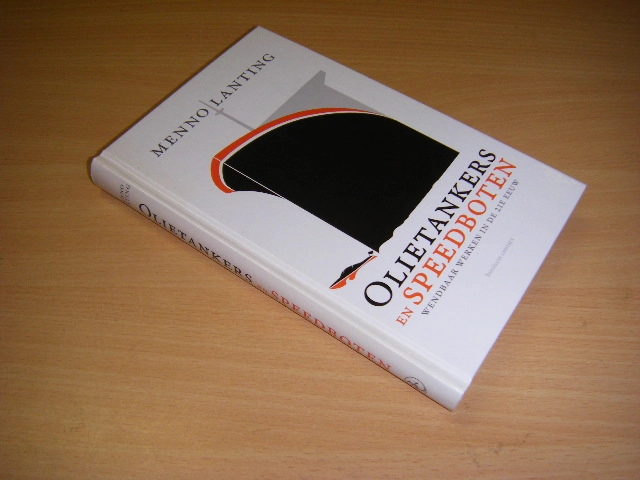About 3 years ago, I got a book as a gift from a Dutch friend of mine (Ben) and since it was in Dutch, I read some of it every time. It had a lot of difficult words in Dutch, but I finally finished it. Now I want to write a summary of this book for you.
Henry Mintzberg’s book Olietankers en Speedboten (Oil Tankers and Speedboats) examines organizations and how they adapt to change. The title metaphorically refers to two types of organizations: “Olietankers” (oil tankers), which symbolize large, traditional, and rigid organizations, and “Speedboten” (speedboats), which represent agile, small, and flexible organizations. Mintzberg’s goal is to analyze how these organizations react to environmental changes and what factors contribute to their success or failure in managing change.
Background
Mintzberg’s theories focus on the interplay between organizational structure and the external environment. Large organizations, often compared to oil tankers, are slow to respond to change due to their complex structures and bureaucracies. However, they tend to be more stable because of their size and power. On the other hand, smaller organizations, akin to speedboats, are more responsive to rapid changes but often face greater risks and instability.
Large and Traditional Organizations: The Oil Tankers
In the first section of the book, Mintzberg discusses large, traditional organizations, which he compares to oil tankers. These organizations are massive and difficult to steer in new directions. Change in such organizations is typically slow and requires substantial time and resources. Decision-making processes in oil tanker-type organizations are long and cumbersome due to their multi-layered hierarchies.
Mintzberg highlights how these large organizations are deeply reliant on internal operations, standardized procedures, and bureaucratic processes. Consequently, they often resist innovation and are slower to adapt to external changes in the market or environment.
Characteristics of Oil Tanker Organizations:
- Complex Hierarchies: Decision-making is slow and complicated because of multiple managerial layers.
- Resistance to Change: These organizations find it hard to adapt to significant shifts because of their dependence on established processes and structures.
- Stability: Despite their slow pace of change, these organizations are generally more stable due to their size and resources.
Small and Agile Organizations: The Speedboats
In the second part of the book, Mintzberg focuses on smaller, more agile organizations, which are much faster in responding to changes. These organizations, likened to speedboats, are small, fast, and capable of changing direction quickly. Their agility allows them to swiftly adjust strategies to align with new market conditions.
Small organizations often have flatter structures, allowing for quicker and simpler decision-making processes. They are typically more innovative, easily adopting new technologies, business models, and products. However, this flexibility comes with risks. Small organizations, with fewer resources, are more vulnerable to failure when faced with large mistakes or crises.
Characteristics of Speedboat Organizations:
- High Flexibility: These organizations can quickly adjust strategies and processes to adapt to changes.
- Simple Decision-making Processes: Due to their flat structures, decision-making is fast and efficient.
- Innovation: Small organizations tend to be more innovative, readily adopting new technologies and approaches.
- Higher Risk: With limited resources, these organizations are more susceptible to collapse in the face of significant errors or crises.
Shared Challenges
A key theme in the book is the shared challenges that both types of organizations face. Mintzberg emphasizes that both large and small organizations must find a balance between stability and innovation. Large organizations must learn how to become more agile without sacrificing their inherent stability. Conversely, small organizations need to create sustainable growth strategies without losing their flexibility.
Mintzberg also points out that an organization’s size alone is not the primary determinant of its success or failure. Rather, it is the organization’s ability to manage change and adapt to dynamic environments that plays a more crucial role.
Strategies for Change
For large organizations, Mintzberg recommends adopting structural decentralization or creating semi-autonomous units to enhance agility. Developing a culture of innovation and encouraging experimentation within smaller teams or divisions is essential. Additionally, transformational leadership can foster positive change by inspiring organizational members to embrace new ways of thinking.
For smaller, more agile organizations, Mintzberg suggests that they need to focus on building stronger support systems and securing more resources to withstand crises and mistakes. Long-term strategies that prioritize financial stability and operational resilience are critical to maintaining growth without compromising flexibility.
Conclusion
At the end of the book, Mintzberg concludes that no organization can be purely an “oil tanker” or a “speedboat.” The most successful organizations are those that can combine the strengths of both. They need to leverage their resources and power while fostering innovation and flexibility. Ultimately, organizations that can respond quickly to change while maintaining their stability are the ones that thrive in the long term.
